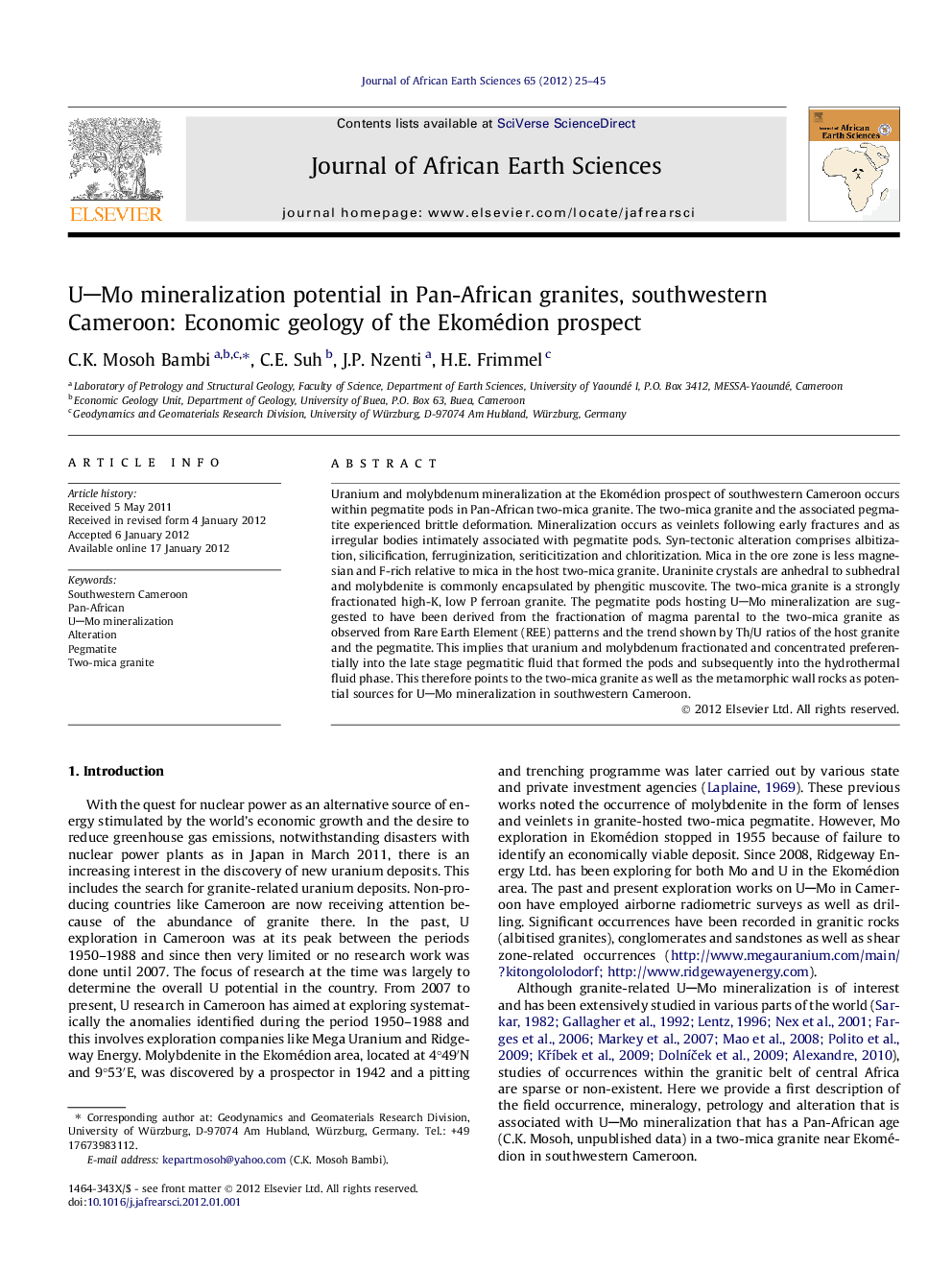| Article ID | Journal | Published Year | Pages | File Type |
|---|---|---|---|---|
| 4729112 | Journal of African Earth Sciences | 2012 | 21 Pages |
Uranium and molybdenum mineralization at the Ekomédion prospect of southwestern Cameroon occurs within pegmatite pods in Pan-African two-mica granite. The two-mica granite and the associated pegmatite experienced brittle deformation. Mineralization occurs as veinlets following early fractures and as irregular bodies intimately associated with pegmatite pods. Syn-tectonic alteration comprises albitization, silicification, ferruginization, seriticitization and chloritization. Mica in the ore zone is less magnesian and F-rich relative to mica in the host two-mica granite. Uraninite crystals are anhedral to subhedral and molybdenite is commonly encapsulated by phengitic muscovite. The two-mica granite is a strongly fractionated high-K, low P ferroan granite. The pegmatite pods hosting UMo mineralization are suggested to have been derived from the fractionation of magma parental to the two-mica granite as observed from Rare Earth Element (REE) patterns and the trend shown by Th/U ratios of the host granite and the pegmatite. This implies that uranium and molybdenum fractionated and concentrated preferentially into the late stage pegmatitic fluid that formed the pods and subsequently into the hydrothermal fluid phase. This therefore points to the two-mica granite as well as the metamorphic wall rocks as potential sources for UMo mineralization in southwestern Cameroon.
► UMo ore at Ekomédion (Cameroon) occurs within pegmatite pods in two-mica granite. ► The mineralization is associated with different alteration styles. ► The ore zone mica is less magnesian and F-rich relative to mica in the host granite. ► The mineralization and the pegmatite pods are genetically linked to the host granite.
